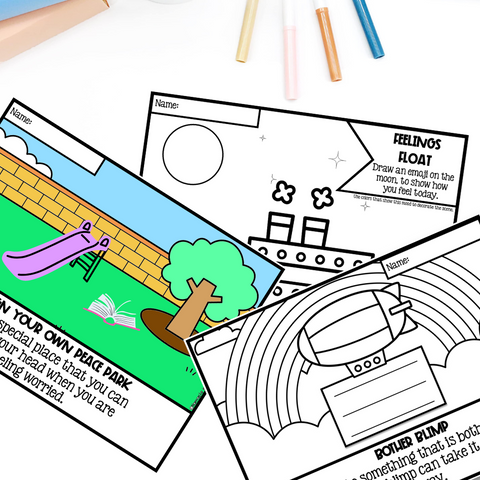Beyond the Quiz
I remember sitting in my Career Studies class, tapping at the keyboard of my sad beige desktop computer in the middle of the computer lab. Today was the day we were going to find out which career best suited us. Mildly anxious on a good day, I second and third-guessed my answers and tried to click the back button to re-read my previous answers. This was it! This was going to dictate my entire future. Then the moment came… based on my answers, I was most likely to become… a farmer.
Likely derived from my answers relating to the questions, "Do you like animals?" and "Do you work hard?", this exercise made me lose hope in a system that was meant to send us off onto our future path.
What the surface-level, skill-based system didn’t assess:
- My debilitating fear of spiders
- My perfectionism + time management hurdles
- My need to have creativity as a foundation for my job (without which, I wither)
- That I thrive off of opportunities to communicate and connect with others
- My debilitating fear of spiders
For too many years, we have taught within the constraints of a box that has prioritized visible strengths and needs and neglects the invisible. We have been misled by the thought that our goal is to prepare our children for the skills needed for a very specific role, instead of connecting with them in moments that will help us equip them with the tools they need to develop transferable, well-rounded skills that set them up for any future role.
“Our job is not to prepare students for something. Our job is to help students prepare themselves for anything.” -A.J. Juliani
At the very foundation of viewing our students' abilities and needs in less black and white, and more in technicolor, we can prioritize the whole-child through mental health check-ins.
A is for Awareness
Mental health check-ins raise awareness among both teachers and students. By routinely asking how our students are feeling, we create a safe space for them to express their emotions. This awareness allows us to identify any struggles or concerns early on, ensuring that no child falls through the cracks. We also can't forget to model how we are feeling as well (and not just on those Mary Poppins days, either).
B is for Building Blocks
Mental health check-ins also strengthen the bond between teachers and students. When children feel heard and understood, they are more likely to trust us with their thoughts and feelings. This bond fosters a supportive environment where students feel comfortable seeking help when they need it most. I couldn't even tell you who my teacher was in Career Studies which is a testament to them not getting to know me, or them not being vulnerable/ relatable enough in the human condition to make me think it was a safe space to share in the first place. Interest-based learning is also one of the most powerful tools we have in running a successful classroom management program. How will we know what excites them and drives them if we don't first carve out time to listen?
C is for Creating a Culture of Care
Incorporating mental health check-ins and calm corners into our daily routine helps create a culture of care within the classroom. When we prioritize mental well-being alongside academic achievement, we send a powerful message to our students: that above grades, it's their well-being and voice that matters the most.
The Impact of Mood Checks
- Early Intervention: Being proactive and catching mental health concerns early allows us to provide the necessary support and resources before issues escalate.
- Emotional Regulation: By teaching children to recognize and manage their emotions, we empower them to navigate life's challenges with resilience and grace.
- Academic Success: A healthy mind is essential for academic success. When students feel emotionally supported, they can focus better in class and perform to the best of their abilities.
- Long-Term Well-Being: The habits and coping skills children learn in elementary school can set the foundation for a lifetime of positive relationship-building skills and self-regulation.
Tips for Implementing Mental Health Check Ins
Let's explore some practical, actionable ways to incorporate feelings check ins into our programs:
Show-of-Fingers Check-ins
In the name of an equitable learning space, it’s critical that we take into consideration that not every child is coming to class ready to learn. By doing a mindful minute check-in, we can help alleviate some of the mental load of some of our students (grief, hunger, fatigue), giving them the best chance of success possible.
This laugh-inducing, digital-check-in can be used during morning meeting to get a quick idea of how everyone is doing. Includes a myriad of dogs and other animals with the simple prompt, "How Do You Feel?". This digital emotions check bundle even includes fabulous themed and seasonal options to add some festive SEL flair to your class parties (e.g., St. Patrick's Day, Easter, Valentine's Day, Halloween, Christmas, fall, winter, summer and spring).
If you're a print-and-go type, we also have printable, seasonal emojis to choose from and reflection sheets that would create a gorgeous SEL journal.
Weather-themed Feelings Thermometer
If you’re looking for something more tangible for our earlier learners, students can move their name over to the weather system that best matches their mood. You can do this at the beginning of the day, or have them move their name after transitions as well to support conflict resolution (e.g., coming back from a Specials class or recess, etc.).
Community Circles
Community circles or restorative circles, are one of my favorite indirect ways of diving deep into the personalities, hopes and fears of our little ones. From would you rather questions, to social skills scenarios, it’s a phenomenal way of collecting data for learning skills and to support active listening skills. This set comes in themes for each season.
This calm coloring book series was created to touch base with students in a private way and blending some principles of art therapy into the process. While students are creating, they lose sight of the apprehensions and reluctancies that can be associated with emotional expression. Each coloring sheet includes a picture to color and a simple one-sentence SEL prompt to answer.
What's your favorite way of consistently prioritizing mental health in your classroom or counseling groups? Let me know in the comments below!







